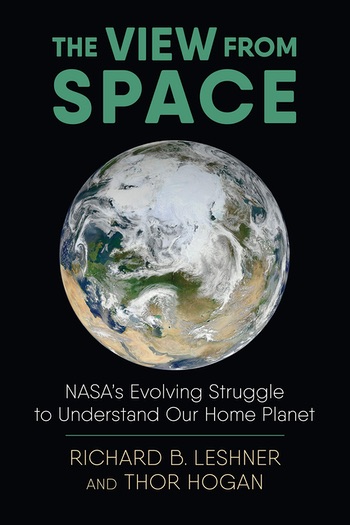Review: The View from Spaceby Jeff Foust
|
| “While human spaceflight and space science have long been the primary missions of NASA,” they write, “the space agency’s earth science research programs may ultimately prove to have been far more important.” |
While that program is relatively mature now, it went through its share of growing pains and near-death experiences in the 1980s and ’90s, as the authors recount. For much of NASA’s early history, Earth science was not a priority, beyond work developing early weather satellites and the initial Landsat satellites. By the early 1980s, though, there was growing interest in other Earth science applications given issues such as rising carbon dioxide levels in the atmosphere and degradation of the ozone layer (including the “ozone holes” over the poles.) That led to initial development of a concept known as System-Z: large, serviceable platforms in polar orbit with dozens of instruments, leveraging capabilities being proposed for the space station program.
By 1990, System-Z had evolved into the Earth Observing System (EOS), which the authors described as three pairs of satellites, “each equivalent in size to the Hubble Space Telescope,” along with a state-of-the-art real-time data processing system. EOS would cost $17 billion through 2000 and up to $50 billion by 2020. But EOS was revamped through the early 1990s because of budget pressures and debates between NASA, the White House, and Congress. (Some of this is familiar ground for Hogan, who wrote Mars Wars in 2007 about the Space Exploration Initiative in the early 1990s.) Ultimately, the massive, serviceable spacecraft were replaced with a series of smaller, less expensive ones that could be launched on expendable rockets rather than the shuttle.
EOS became a successful program, and now Earth science is firmly entrenched at the agency, with a mature program and processes, like decadal surveys, to identify scientific priorities for future missions. This book illustrates how that robust program came into being, and how it overcame numerous policy challenges. The authors tie that into academic models of policy development and bureaucracies, but even if you’re not interested in those academic approaches, the book is still a fascinating history of how NASA’s modern-day Earth science program emerge decades ago. It doesn’t get the attention of launching astronauts or landing Mars rovers, but it may be just as important, if not more so.
Note: we are temporarily moderating all comments submitted to deal with a surge in spam.
